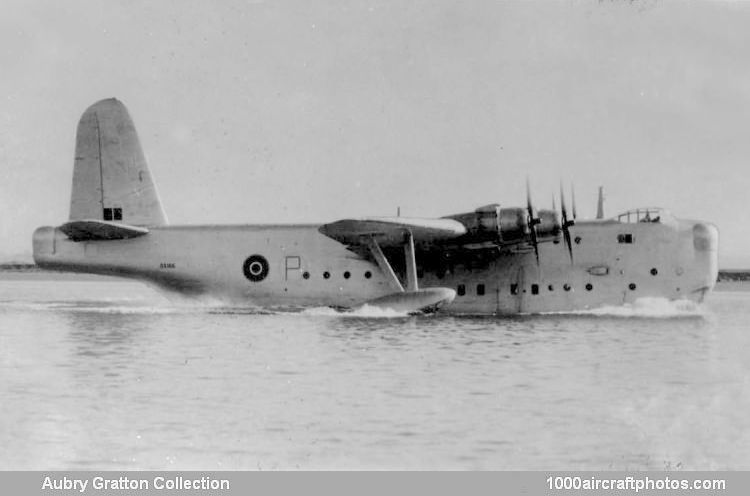12/15/2017. Remarks by Johan Visschedijk: "The Shetland was designed to meet the requirements of Specification R.14/40 which called for a four-engined long-range reconnaissance flying boat capable of carrying a 4,000 lb (1,814 kg) bomb load and heavy defensive armament. Designed and constructed by Short Brothers with the collaboration of Saunders-Roe, work was initiated in 1940, utilizing the results obtained from the small-scale test flights carried out with the Saunders-Roe A.37 in 1942/44, when the Shetland hull, tail assembly, and wing tip float profiles had been evaluated.
Shorts were responsible for the manufacture of the larger part of the structure, and for assembly and flight testing, with Saunders-Roe in charge of the detail design and wing component manufacture, inc1uding flaps, ailerons, engine mountings and wing tip floats. At the time of its appearance the Shetland was the largest British flying boat ever built, only 50 ft (15.24 m) less in wing span than the American Martin Mars.
Powered by four 2,500 hp Bristol Centaurus XI sleeve-valve engines, the machine embodied several interesting technical developments, including the Rotol auxiliary generators which drove all ancillaries and supplied alternating current for the first time on any British aircraft, the reversible-pitch inner propellers for water maneuvering, and the Centaurus engines themselves, mentioned for the first time in connection with this aircraft. The huge hull, 110 ft (33.53 m) in length, had two decks and accommodated a crew of eleven, with gun turrets in bow, dorsal, and tail positions and full arrangements for crew comfort and operational duties for patrols of up to 25 hours duration.
Two prototypes were ordered, the first of these, serialled DX166, making its initial flight from the Medway on December 14, 1944, piloted by John Lankester Parker on his last assignment as Chief Test Pilot after 38 years with the company. By this time many changes had taken place in operational requirements, and the prototype was not fully equipped for military duties, being fitted with dummy bow and tail turrets only and no military equipment. After initial manufacturers' trials, the Shetland was delivered to the Marine Aircraft Experimental Establishment at Felixstowe for type trials in October 1945. The results were not entirely satisfactory, for although water handling was acceptable, the stabilizing floats had insufficient clearance for take off at maximum loaded weight and control harmonization left much to be desired. The longitudinal stability in level flight proved to be marginal. Further trials were halted by the complete loss of the aircraft by fire at its moorings on January 28, 1946.
The second prototype Shetland had been allocated the serial number DX171 (c/n S.1313), but was completed as a civil transport with accommodation for forty passengers and eleven crew. Designated S.40 Shetland Mk.II and registered G-AGVD, this aircraft made its maiden flight on September 17, 1947, but only limited flight trials were undertaken, the aircraft eventually being broken up."
